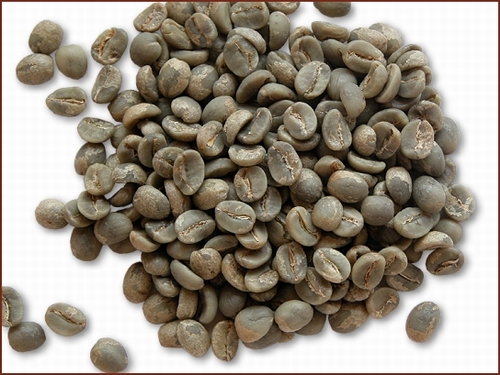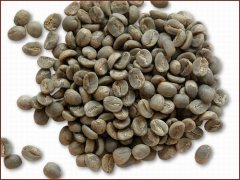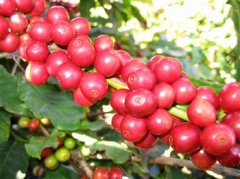How to choose coffee beans

What kind of raw beans are high quality raw beans? First look at the surface of the beans, fresh high-quality raw beans, shiny surface, in addition, processed good raw beans, uniform color, uneven surface color can not be called good beans, must choose uniform color when purchasing. Secondly, the particle size is consistent, which is also evidence of good quality management. Make sure the particle size is consistent when purchasing. Uniform and neat coffee beans can achieve consistent roasting effect; otherwise, some are too deep and bitter, and some are too shallow and sour, which will affect the overall taste of roasted coffee beans.
Green beans are divided into several grades according to quality standards, which vary from place to place and are basically determined according to size and shape. The higher the grade, the better the quality. At present, because the domestic coffee green bean market has just started, the coffee green beans sold are mainly low-grade futures beans. The green beans we get usually have many flaws. Defective coffee beans can be quite harmful, including
variant bean
Not flat beans are not garden beans, due to the development of abnormal reasons, raw beans in the shell when the central part of the broken. The beans tend to be uneven when baked.
Fermented beans/black beans
During processing or washing, beans ferment internally. Fermented sour.
Unripe beans/white dead beans
Coffee cherries are harvested before they are fully ripe. The beans are ivory in color and green in taste when baked.
mildewed bean
Moist, rain, mold breeding during processing and transportation. As long as there is a bean mold, it will soon spread to others, be sure to pay attention.
Worm-eaten beans
Worn by a pest called coffee beetles, the beans have insect eyes that give coffee a bad smell.
dried fruits
with the outer skin entering the drying process. In the non-washing process, the green beans can be removed from the shell, but in the washing process, this state becomes defective beans.
heteropea
For example, Robstar mixed in Arabica and flat beans mixed in garden beans.
small sandstone
Easy to break the bean grinder, more extensive sun can be found. In the selection of time we put beans spread out in sufficient light, with both hands side pick edge efficiency is higher. Basically, coffee beans that seem to feel uncomfortable can be picked out. After selection, the beans will bake more neatly and taste more pure. If too many unexpected factors are mixed, it is impossible to judge the true taste of coffee beans themselves. Ordinary coffee beans of general commercial grade can also reach very high and expensive grades, even fine coffee levels, through their own selection.
Coffee by Variety: Not all Arabica beans are selected coffee, only a few high-grade beans come from high mountain areas, or through strict selection and grading, it is hard texture, rich taste, excellent flavor, is selected coffee, accounting for only about 10% of global coffee production. As for Robusta beans, they all enter the commercial coffee market, and only a few good beans can be regarded as specialty coffee.
From the processing method to see coffee: due to the different maturity time of coffee fruit, good coffee must be divided into 3~6 manual harvest, in the process of processing, whether it is sun or water washing method, must be careful. The coffee beans produced must also be strictly selected and graded to ensure the stability of their quality. There are areas where the terroir conditions are good enough to produce good coffee, but they cannot be classified as fine coffee if they are not handled properly or if they are only inferior. The American Specialty Coffee Association has published a Green Coffee Classification Chart that clearly defines the perfect green beans and coffee with special flavors as a selection. The specialty coffee is absolutely special, far beyond what tastes good.
From the roasting method to see coffee: the age of green beans, type, room temperature, moisture content and roasting temperature have a close relationship. In general, select coffee is usually roasted in small batches, which must be strictly tested and analyzed in advance, and then watched by the roaster throughout the whole process until it is roasted to the best state. Ensure that the coffee beans are evenly cooked inside and outside to ensure perfect quality.
From the freshness of coffee selection: fresh coffee is a selection of coffee, fresh here refers to the fresh after roasting, rather than refers to the fresh beans after harvest. Coffee beans after roasting, about 1 to 7 days flavor development to the peak, is the best time to drink; once stored for too long, coffee will naturally decline, and suffer oxidation, flavor naturally much worse than before.
From the way coffee is sold: fresh beans are important, and the roasting date should be kept within 7 days in order to make good coffee. Commercial coffee, by contrast, comes in cans, glass jars, or plastic bags to pack inferior beans, ground coffee, or instant coffee.
Coffee from the name of the commodity: good coffee has its own characteristics, not willing to hide its name only called coffee. Therefore, in order to highlight various unique styles, good coffee has its own name, such as: Jamaica Blue Mountain (Blue Mountain), Ethiopia Yirgacheff (Yirgacheff), Indonesia Sulawesi (Sulawesi), Guatemala (Antiqua), Hawaii (Kona) and so on. There are also grades marked as part of the name, such as Kenya AA(AA is the highest grade in the local classification system).
Important Notice :
前街咖啡 FrontStreet Coffee has moved to new addredd:
FrontStreet Coffee Address: 315,Donghua East Road,GuangZhou
Tel:020 38364473
- Prev

How to select raw coffee beans in Coffee Encyclopedia
What kind of raw beans are high-quality raw beans? First look at the surface of beans, fresh and high-quality raw beans, the surface is shiny, in addition, the processing of good raw beans, uniform color, the surface of uneven color can not be called good beans, must choose uniform color. Secondly, the particle size is the same, which is also evidence of good quality management. Make sure that the particle size is the same when you buy it.
- Next

Coffee encyclopedia the main producing area of coffee in the world
The main coffee producing areas in the coffee market are mainly Coffea Arabica and Coffea Robusta. Each of them can be subdivided into more variety branches. Most of the coffee beans in circulation on the market are distinguished by their origin. The following lists some of the major coffee producing areas and their famous coffee: coffee producing areas in Asia and the Pacific:
Related
- Guji coffee producing area of Guji, Ethiopia: Humbela, Shakiso, Wulaga
- What is the most expensive variety of Qiloso in BOP multi-variety group?
- How to store the coffee beans bought home?
- Why are Yemeni coffee beans so rare now?
- Ethiopian Sidamo all Red Fruit Sun Sun Santa Vini Coffee beans
- SOE is mostly sour? What does it mean? Is it a single bean? what's the difference between it and Italian blending?
- Is Italian coffee beans suitable for making hand-brewed coffee?
- How to choose coffee beans when making cold coffee? What kind of coffee beans are suitable for making cold coffee?
- Just entered the pit to make coffee, what kind of coffee beans should be chosen?
- Can only Japan buy real Blue Mountain Coffee? What are authentic Jamaican Blue Mountain coffee beans?

